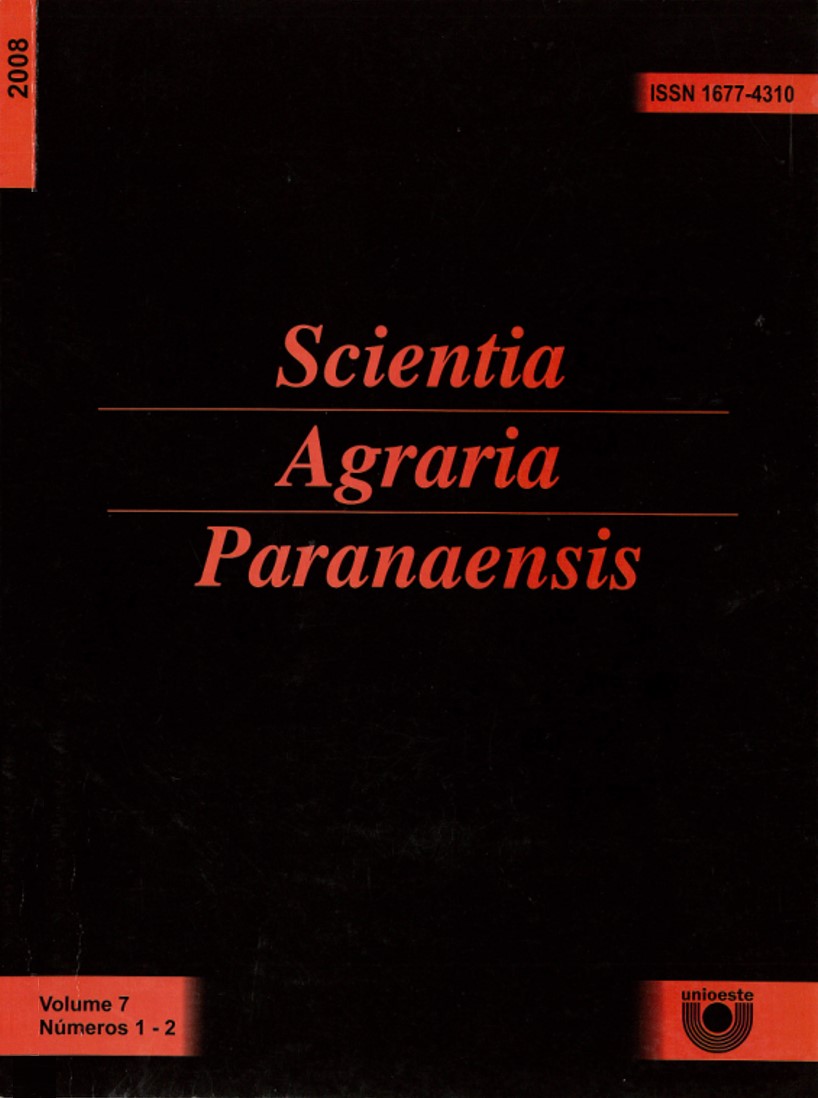Produção e composição bromatológica do capim pé-de-galinha
DOI:
https://doi.org/10.18188/sap.v0i0.2049Keywords:
forragem, proteína bruta, entressafraAbstract
This experiment was carried out to evaluate the production and bromatologic composition of the forrage: pearl millet, sorghum and finger millet under different nitrogen levels in soybean production area. Was become fullfilled the experiment in the Agronomic Institute of the Paraná - IAPAR of Palotina, and the bromatologic analyses carried through in the Unioeste Campus of Marechal Cândido Rondon - PR. The treatments had been: sorghum, pearl millet and finger millet with 0, 20, 40 and 60 kg.ha-1 N. The experimental delineation block-type was randomized with three repetitions arranged in fatorial. The plantation was carried through in the month of September and the evaluation carried through in November. It was verified that finger millet presented greater rude protein text (13.29%) significantly differing (P<0,05) from pearl millet (11.25%) and sorghum (9.57%). However, finger millet presented the smallest revenue crude protein. For texts FND and FAD, finger millet presented lower values (64.97% and 32.66%, respectively) to pearl millet (68.02% and 37.45%) and sorghum (69.72% and 38.19%). The fertilization promoted increase in the production of dry substance (DS) for sorghum and pearl millet. The use of the sorgo is recommended for graze by promoting larger matter production and crude protein. The nitrogen fertilization did not have significant effect in the chemical composition of the forrage.
Downloads
Published
How to Cite
Issue
Section
License
Aviso de Direito Autoral Creative Commons
Política para Periódicos de Acesso Livre
Autores que publicam nesta revista concordam com os seguintes termos:
1. Autores mantém os direitos autorais e concedem à revista o direito de primeira publicação, com o trabalho simultaneamente licenciado sob a Licença Creative Commons Attribution que permite o compartilhamento do trabalho com reconhecimento da autoria e publicação inicial nesta revista.2. Autores têm autorização para assumir contratos adicionais separadamente, para distribuição não-exclusiva da versão do trabalho publicada nesta revista (ex.: publicar em repositório institucional ou como capítulo de livro), com reconhecimento de autoria e publicação inicial nesta revista.
3. Autores têm permissão e são estimulados a publicar e distribuir seu trabalho online (ex.: em repositórios institucionais ou na sua página pessoal) a qualquer ponto antes ou durante o processo editorial, já que isso pode gerar alterações produtivas, bem como aumentar o impacto e a citação do trabalho publicado (Veja O Efeito do Acesso Livre).
Licença Creative Commons
Esta obra está licenciada com uma Licença Creative Commons Atribuição-NãoComercial-CompartilhaIgual 4.0 Internacional, o que permite compartilhar, copiar, distribuir, exibir, reproduzir, a totalidade ou partes desde que não tenha objetivo comercial e sejam citados os autores e a fonte.


